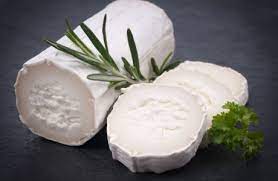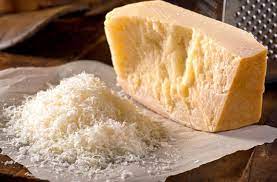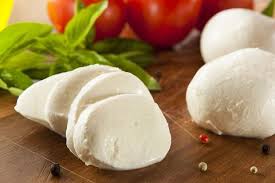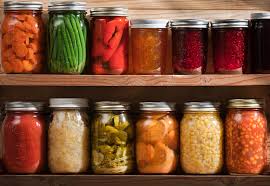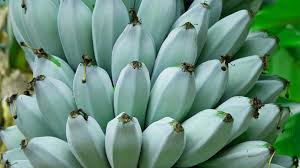Content of the Article
cheddar cheeseIt is the most well-known type of cheese in the world due to its taste and production method. It is delicious, but also adapts to many recipes.
What is Cheddar cheese?
cheddaris a pale yellow, medium-hard cheese made from cow's milk. Sometimes food coloring annatto There are also varieties of cheese close to orange in color due to its use.
root of cheddar cheese a small town in Somerset, England cheddar townit is based on. It is now performed worldwide.
What are the types of Cheddar?
cheddar cheeseThe taste and texture of the gravy vary depending on the fermentation time. It typically goes through the fermentation process between 3 and 24 months.
Fermented for a short time turns into a soft-textured, creamy cheese. Cheeses that have been aged longer have a sharp taste.
The longer the fermentation time, the higher the lactose content of the cheese.

Nutritional value of Cheddar cheese
cheddar cheeseThe calorie, vitamin and mineral content in 100 grams of pineapple is as follows;
- Calories: 403
- Carbs: 1.3 g
- Fiber: 0 g
- Sugar: 0,5 g
- Fat: 33.1 g
- Protein: 24,9 g
- Vitamin A: of DV 29%
- Vitamin B2: of DV 22% of
- Vitamin B12: of DV 14% of
- Vitamin B6: of DV 4% of
- Vitamin D: of DV 3% of
- Vitamin K: of DV 3% of
- Calcium: of DV 72% of
- Phosphorus: of DV 51% of
- Zinc: of DV 21% of
- Selenium: 20%
- Iron: of DV 4% of
- Potassium: of DV 3% of
What Are the Benefits of Cheddar Cheese?

It is an excellent source of protein
- cheddar cheeseAbout 25% by weight is protein. That is, it is a food rich in protein.
- ProteinIt is the most important macronutrient for our health.
- Since it provides satiety, it helps to lose weight and maintain lean muscle mass.
High in calcium
- cheddar cheeseprovides a significant amount of calcium.
- CalciumIt is an essential mineral responsible for the overall functioning of the skeletal and muscular system.
- cheddar cheeseCalcium is a high amount of bioavailable calcium.

nutrient density
- cheddar cheeseIt is a very good food in terms of nutrient density.
- A, B2, B12, calcium, phosphorus, selenium ve zinc It is an excellent source of micronutrients such as
- It is a good source of protein along with a wealth of micronutrients.
It is a fermented food.
- According to research, fermented high-fat dairy products, type 2 diabetes and has a positive effect on the risk of cardiovascular diseases and stroke.
- cheddar cheese Fermented dairy products such as dairy products reduce inflammatory markers.
Source of probiotics
- a fermented cheese Cheddarare a source of probiotics, which are beneficial live bacteria that thrive in certain foods.
- found in cheese probioticsProtects against harmful bacteria in the gut. Improves colon health.

What are the harms of Cheddar cheese?
cheddar cheeseThe negative effects of lactose are due to lactose, milk allergy and energy density.
Contains small amount of lactose
- Lactose is a type of milk sugar found in dairy products. After early childhood, some adults develop lactose deficiency because the digestive enzyme lactase stops production.
- Lactase is the enzyme needed to properly digest lactose.
- Lactose intolerance When people with lactose consume lactose, they experience discomfort such as abdominal pain, bloating, diarrhea, gas and nausea.
high in calories
- High-calorie foods are not unhealthy. But overeating high-calorie foods causes weight gain.
Milk allergy
- Although these people make up a small group, some people milk allergy has. Therefore, he is allergic to products made from milk, such as cheese.
- Those people cheddar cheese can't eat.

How is Cheddar cheese made?
Making Cheddar Cheese The materials needed are:
- Fresh, unpasteurized milk
- Bacterial starter culture
- Rennet (helps separate clots and whey)
- Salt
How is it produced?
cheddarIt is made either pasteurized or unpasteurized.
- In the manufacturing process, it is heated to a temperature high enough to kill bacteria in the milk.
- Then, starter culture is added to the milk together with rennet, and the milk is curdled. The remaining liquid (whey) is then extracted from the cheese.
- After the cheese has hardened, the curds are cut into small pieces to facilitate salting.
- cheddar cheese After salting, it is pressed into large, solid cheese slices weighing up to 20 kilograms. These cheese molds are then vacuum packed and stored in boxes to ferment.
- This fermentation process normally takes from three to twenty-four months.

